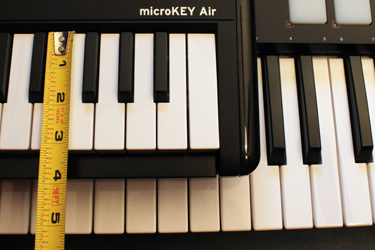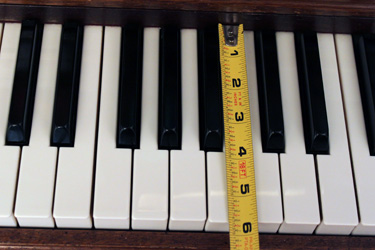Keyboards
Originally I was going to recreate the list of 50 or so keyboard I was considering before my purchase in March of 2017, but by the time I'm writing this in 2020 I'm sure the options have changed. Instead I'll give some more general information so that you can make better decisions.
Hardware Synthesizers vs MIDI controllers
By "Keyboards" I'm referring to both Hardware Synthesizers and MIDI controllers. Hardware Synthesizers actually create music. MIDI controllers only have keys and require some kind of software be it an app on your phone or a computer program to make the sound. Hence MIDI controllers are less expensive. Unless the unit has actually speakers on it (which most don't) you can't tell them apart simply by looking at them.
Take for example the Roland FA-06 and the M-Audio Oxygen.
Key Lengths: Real Piano 5 5/8, M-Audio 5 4/8, Korg Micro 3 1/8.


Keys
A special note should also be made about the keys themselves. Unlike the piano there are no standard number of keys or even size of keys. Some units do not even have keys and are normally referred to as sound modules. Most manufactures have both "full size" and "micro size" keyboard options. Just be aware these are relative sizes and "full size" is still almost never the exact size of a piano keyboard.
As for the "feel of pressing the keys" or the action. Unless you are looking at a synthesizer that is trying to be a digital piano with true action keys, they are absolutely not going to feel like playing a piano. Some people hate this, others don't care.
Below are my Korg MicroKey Air compared to my M-Audio Oxygen and a Standard Piano keyboard for comparison.


Popular Keyboard Companies
These companies produce both synthesizers and MIDI Controllers and are currently some of the big names.
Roland
Korg
Yamaha
M-Audio
Moog
Native Instruments
Novation

